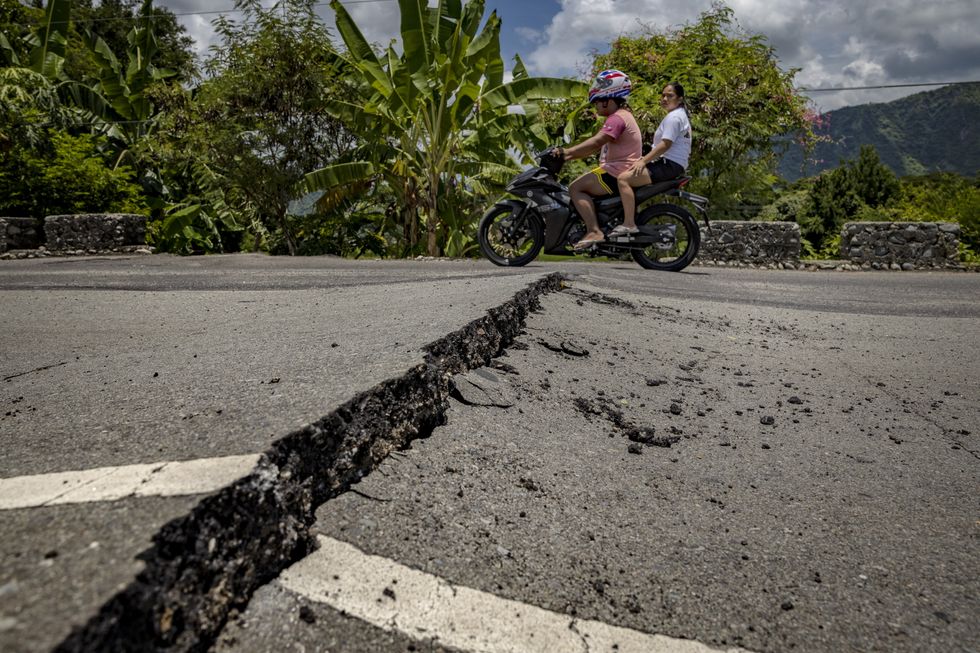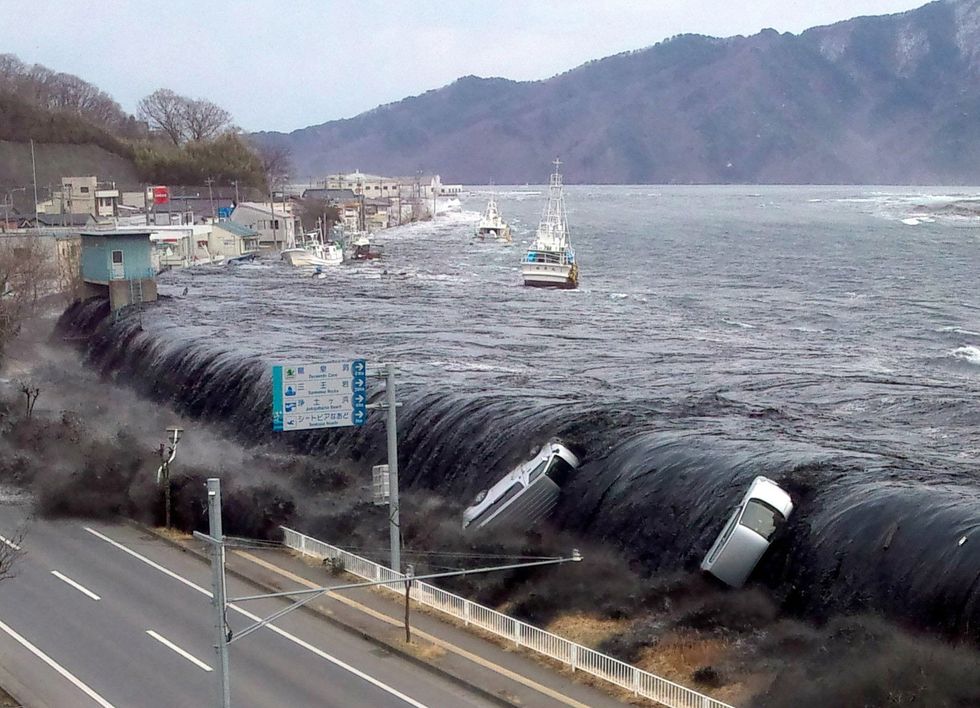7.6 magnitude earthquake hits Philippines as Japan issues tsunami alert
An image of an earthquake hitting the Philippines
Tsunami waves could hit the Philippines by midnight
Don't Miss
Most Read
Trending on GB News
A 7.6 magnitude earthquake has hit the Philippines as Japan faces a tsunami alert.
The European-Mediterranean Seismological Centre confirmed Mindanao was rocked by the earthquake.
The earthquake was at a depth of 63 km (39 miles).
Tsunamis could still hit the Philippines and Japan shortly.
WATCH NOW: A couple react to an earthquake
The Philippines could see tsunamis by midnight, the Philippine Seismology Agency has revealed.
Manila has advised the residents of living on the eastern coast Mindanao to immediately evacuate.
The Japanese broadcaster NHK said tsunami waves of up to a metre high could hit the Asian island by 1.30am on Sunday.
The US Geographic Survey put the quake at magnitude 7.6 and a depth of 32 km (20 miles).

People on a motorbike ride over a cracked road following a magnitude 7.0 earthquake
GETTY
It also confirmed the earthquake hit at 10.37 pm local time (2.37pm GMT).
An alert was also issued on Japan's western Pacific coast.
The Japan Meteorological Agency confirmed the alert was issued on Saturday.
Residents described a “strong and long” shaking in their homes.
A person living some 146 km from the epicentre claimed: “The shaking woke me up from sleep and it kept on going for what felt like forever.

An image of a tsunami in Japan
GETTY
"I could see my ceiling and walls shaking. Longest and strongest earthquake I’ve ever felt.”
Another said: "I’m in Davao city. This one is stronger and longer than the last quake on November 17. Shaking side to side still."
A separate 7.2 magnitude earthquake hit the region last month.
The area is particularly vulnerable to earthquakes due to tectonic plates overlapping at convergent boundaries called subduction zones.
It has been reported that the region witnesses between 100 and 150 earthquakes with a magnitude of four or more every year.








